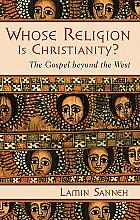Death to life, water to wine

[Above: Revivalists outside of Soé, From Don Crawford, Miracles in Indonesia, 1972—Courtesy of Tyndale House Publishers]
It’s easy to miss a crucial event when a bigger one grabs our attention. For instance, few know that Harriet Quimby (1875–1912) made history on April 16, 1912, as the first female pilot to fly across the English Channel. Unfortunately, due to the sinking of the Titanic the day before, no one was paying much attention.
In a similar way, one of the greatest revivals ever to take place in Indonesia was overshadowed by an attempted coup that started a few days later, causing a heartbreaking loss of life and major upheaval in the nation’s government over the following years. The vast social and political changes of this period blurred the memory of the 1965 Timor Revival for many Indonesians, even many Christians there, yet over the last half-century some have made efforts to commemorate this significant spiritual event both within the nation
and abroad.
Springs of living water
In the two decades before the 1965 Timor Revival, there had been at least three isolated spiritual movements in the region. In 1945 events in Niki-Niki resulted in the conversion of a local ruler and his subjects. Then in 1948 people in the Baumata area witnessed several miraculous events following the preaching of a Reverend Sine in the local vernacular. The most remarkable of these was the sudden appearance of a spring discharging a considerable amount of water, which ultimately transformed the previously arid and unproductive region of Baumata into a fertile and productive one.
Subsequently, in 1963–1964, another Spirit movement occurred, this time led by a group under the guidance of Johannes Ratuwalu. They undertook extensive missionary work, performing numerous miracles and healing the sick. Unfortunately this movement did not last long, as the leader succumbed to the temptations of pride, lust, and greed. But a year after that movement faded, another began—what we now call the Timor Revival.
On September 26, 1965, about 200 people gathered for a prayer service in the Maranatha Church in the town of Soé. They experienced an extraordinary visitation of the Spirit, similar to what happened in Jerusalem on the first Pentecost. In the book Like a Mighty Wind, first published in 1971, Mel Tari, one of the participants, gave a riveting testimony:
And that night, as I was sitting next to my sister, I heard this mighty rushing sound. It sounded like a small tornado in the church. I looked around and saw nothing. . . . Then I heard the fire bell ringing loud and fast. Across the street from the church was the police station and the fire bell. The man in the police station saw that our church was on fire, so he rang the bell to tell people. . . . When they got to the church, they saw the flames, but the church was not burning. Instead of natural fire, it was the fire of God. . . . After that, people started to stand all over the church, worshipping the Lord in different languages. Heaven came down that night, and it was wonderful.
The incredible event triggered mass repentance within the congregation. They were sorry for their sins and dedicated their lives to God. Many young people, compelled to preach the gospel, formed lay evangelism teams, ready to go from region to region. In the first three months after the phenomenal events in Soe, at least 70 evangelism teams went forth, made up of laypeople willing to go wherever the Spirit would lead them. Most teams had three or four people, but some had twenty. Wherever they went they sensed the Lord going before them, performing signs and wonders and leading people to repentance as they preached the message of God’s Word. And so began the momentous Timor Revival.
Dying to sin
Just like spiritual awakenings in other parts of the world, the Timor Revival led to a large-scale transformation of congregational life. While the Timorese people had been familiar with Christianity long before the revival, the majority were nominal Christians. Many were still living with elements of their previous animistic beliefs. The Timor Revival brought repentance and new birth to those nominal Christians.
Three key indicators marked this spiritual transformation: 1) the widespread confession of sins and surrender of amulets and fetishes; 2) a noticeable shift in the atmosphere of communal worship from formal and “dead” to passionate and vibrant; and 3) a strong desire to carry out family worship in homes. Churches also grew. Between 1965 and 1967, church membership in Timor increased from 450,000 to 650,000.
The Timor Revival also brought about significant social transformation. Police on the island of Rote, a small island not far from Timor, were literally out of work because people had stopped drinking, according to Petrus Octavianus (1928–2014), one of Indonesia’s most prominent evangelical leaders. Elsewhere, in a region known for cattle thieves, prison doors were open because they stopped stealing cows.
Spreading fervor
In addition to its impact on congregational and social life, the Timor Revival prompted a significant influx of laypeople into the ministry of evangelism. The driving force behind the Timor Revival was not clergy but laity. Many young men and women left their jobs to disseminate the revival’s fervor throughout Timor and other islands, and some went overseas. Most of these individuals were uneducated and lacked formal seminary training. However, imbued with the power of the Holy Spirit, they had confidence that they could serve as witnesses in a manner analogous to the disciples of Jesus as described in the Acts of the Apostles.
Signs and wonders were also an essential feature of the Timor Revival. Most of the spiritual gifts listed in the Bible were reportedly manifested, but the most prominent of these gifts were those of knowledge and discernment of spirits. People with these gifts could discern the presence of hidden sins, idols, and amulets in those who had heard their message and were called to repentance.
Water to wine
Numerous accounts of miracles came out of this revival. Some are considered more remarkable than others, such as the transformation of water into wine. The first case occurred in Kampung, Aman, Soé, on October 5, 1967. A group of people at the prayer meeting, led by a woman named Liufeto-Mooy, required wine to celebrate the Eucharist, but there was a shortage of wine at that time. After much prayer they received divine guidance to extract water from the local spring at midnight and offer a prayer over the water. By the next day, the water had undergone a miraculous transformation into wine—which was then used to celebrate the Eucharist.
On multiple occasions since then, the Timorese people have observed the same phenomenon—water turned to wine. Other miracles were also reported in the Timor Revival, including the multiplication of food, the ability to move from one place to another, the power to control dangerous animals such as snakes and crocodiles, survival despite eating poisoned food, and even raising the dead.
The topic of miracles is arguably one of the most controversial and attention-grabbing issues of revival, particularly for those in Western societies. Some commentators challenge the veracity of miracle stories. While there might be exaggerations in some of these accounts, considerable evidence exists to support the reports of genuine miracles occurring throughout Timor during this time.
The fading revival
After four glorious years, the Timor Revival came to an end. Many have wondered why. Some blame the attitude of church leaders, who were not thoroughly opposed to the revival, but perhaps felt their comfort zone disturbed by its young leaders. In the Southeast Asia Journal of Theology (1973), Frank L. Cooley observed that the spiritual work of revival teams in congregations is often seen as a criticism or challenge to church leaders. This dynamic may have brought about the fading of the Timor Revival.
Still, though it occurred more than half a century ago, this spiritual event continues to resonate deeply in the hearts and minds of Indonesians. The Timor Revival inspired Christians in Indonesia to believe that the sovereign God can still do mighty works in the world through the ministry of ordinary people. CH
By Gani Wiyono
[Christian History originally published this article in Christian History Issue #153 in 2024]
Gani Wiyono is director of the Center of Pentecostal Studies at Satya Bhakti Advanced School of Theology, Malang, Indonesia.Next articles
Century of the Holy Spirit
Pentecostal, Charismatic, and Third Wave Revivals of the Twentieth Century
Connie DawsonThe moving cloud of God’s presence
How do Christians align with God in the work of revival?
Recommended resources: Global outpouring
Learn more about the revivals and spiritual awakenings of the last century or two in these resources recommended by the CH team.
The editors and contributorsSupport us
Christian History Institute (CHI) is a non-profit Pennsylvania corporation founded in 1982. Your donations support the continuation of this ministry
Donate







